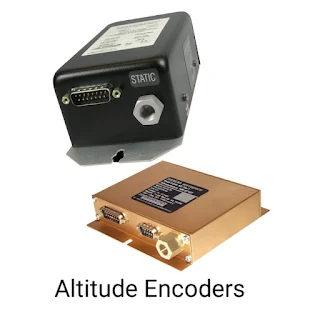Altitude Encoders | Encoding Altimeter
Altitude
encoders convert the aircraft’s pressure altitude into a code
which is sent to ATC by the aircraft Transponder. The reports of every
100 foot increment are usually reported. Encoders have varied over the years
since they were first introduced. Some encoders are built into the altimeter
instrument itself, installed in the instrument panel and connected by wires to
the transponder. Some other types of encoders are mounted out of sight on an
avionics rack or other suitable place. These are known as blind encoders.
Types of Altitude Encoders
Some large category transport aircraft may have large altitude encoders remotely located from the main instrument with a static line connecting to an internal aneroid. Modern general aviation (Business Jet) encoders are smaller and lighter, but they still have an aneroid and static line connection on the inside. Some advanced electronic encoders use microtransistors and are completely solid-state types, including the pressure sensing device from which the altitude is derived. No static port connection is required for solid-state encoders. It collects data from aircraft using GPS and other systems.
How Encoding Altimeter Works?
The
digital pulse message sent in response to the secondary surveillance radar
interrogation becomes the digital representation of the aircraft's pressure
altitude when a transponder selection is set to ALT. Between 1200 feet MSL and
126,700 feet MSL, there are 1280 altitude codes, one for every 100 feet of
altitude. A code is assigned to each altitude increment. The Mode C (or S)
interrogation deactivates the 4096 location codes and activates the encoder,
despite the fact that these are 1280 of the same codes used for location and
IDENT.










0 Comments